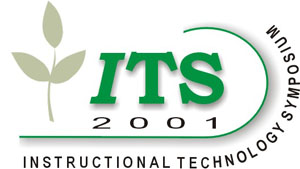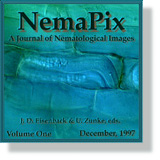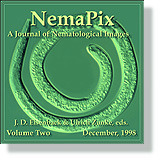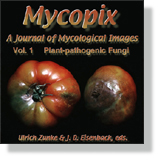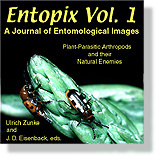Introduction Photographs of organisms and the damage they cause to plants are extremely important in teaching, research, and extension in nematology, entomology, and plant pathology. A good picture can illustrate concepts and ideas that are difficult to express in words alone. A teacher or extension professional can give a lengthy explanation with very precise words about a particular nematode, insect, or plant pathogenic fungus; but no matter how articulate, the verbal description alone will probably be lacking unless it is accompanied by a good illustration. Therefore, good teachers recognize the necessity of collecting, organizing, and maintaining a suitable reservoir of images to support their scholarly presentations. Our interest in acquiring images that are useful for teaching nematology, entomology, and plant pathology caused us to establish a large quantity of original 35mm transparencies. As our images increased in number, we realized that many other scientists had their own private stocks of images that would be a valuable resource for us, but we knew first-hand how difficult it was for us to organize and maintain our collection, much less someone else’s. The task of maintaining a collection of images can be time consuming, particularly if it consists of the traditional 35mm transparencies. The slides are subject to dust, scratches, fading, and wear. If they are stored in slide carousels or trays, they can occupy a lot of storage space. If they are stored in slide pages, storage volume is reduced but accessibility and maintainance become more problematic. In addition, slides that are used in a presentation must be returned to the correct location so that they can be found again. The movement of 35mm transparencies from one place to another introduces wear, dust, scratches and other artifacts that degrade the image. Many of the problems involved in maintaining large numbers of images can be overcome by digitizing 35mm transparencies and other originals such as drawings, tables, charts, video clips. The major advantage of digital images is the ease of organization and use. They can be organized according to key words so that they can be found with relative ease. Additionally they can be grouped into montages, labeled with text or other markers, and cropped and altered to meet the special needs of the user. In addition, digital databases can be reproduced at very little cost. For example, a slide collection containing 1,000 pictures would cost nearly $750 to reproduce. Additional labels, slide pages or trays would cost an additional $250. However, the most important limitation to maintaining a large collection is the time reguired to organize the images so that it is easy to use. Also, acquisition of originals from photographers and researchers is also a major complication to the production of image databases. The initial gathering, organizing, and digitizing graphics were time consuming and expensive, so we decided to offer our collections on CD ROM for a fee to others who might find them to be beneficial. All of the images can be used for educational projects such as lectures, labs, web pages, etc. for free as long as the source is credited. The copyright remains with the original photographer or author. Mactode Publications was formed as a means to produce and distribute these products. The profit that is collected is reinvested in the production of additional volumes that will be made available for enhancing the teaching, research, and extension of nematology, entomology, and plant pathology. Presently, there four volumes as illustrated below. Additional volumes of each series are planned or are currently in production. Mycopix Vol. 2 will consist entirely of mushrooms and will be available by the summer of 2001. Submission of photographs for these volumes are welcome. Please send them to (Western Hemisphere) J. D. Eisenback, 3510 Indian Meadow Drive, Blacksburg, VA 24060 or (Eastern Hemisphere) Ulrich Zunke, Institute for Applied Botany, University of Hamburg, Hamburg D-20355, Germany.
Additional information about these resources can be found at the Mactode Publications website: http://mactode.4dw.com or via E-mail : mactode@mac.com End
|
